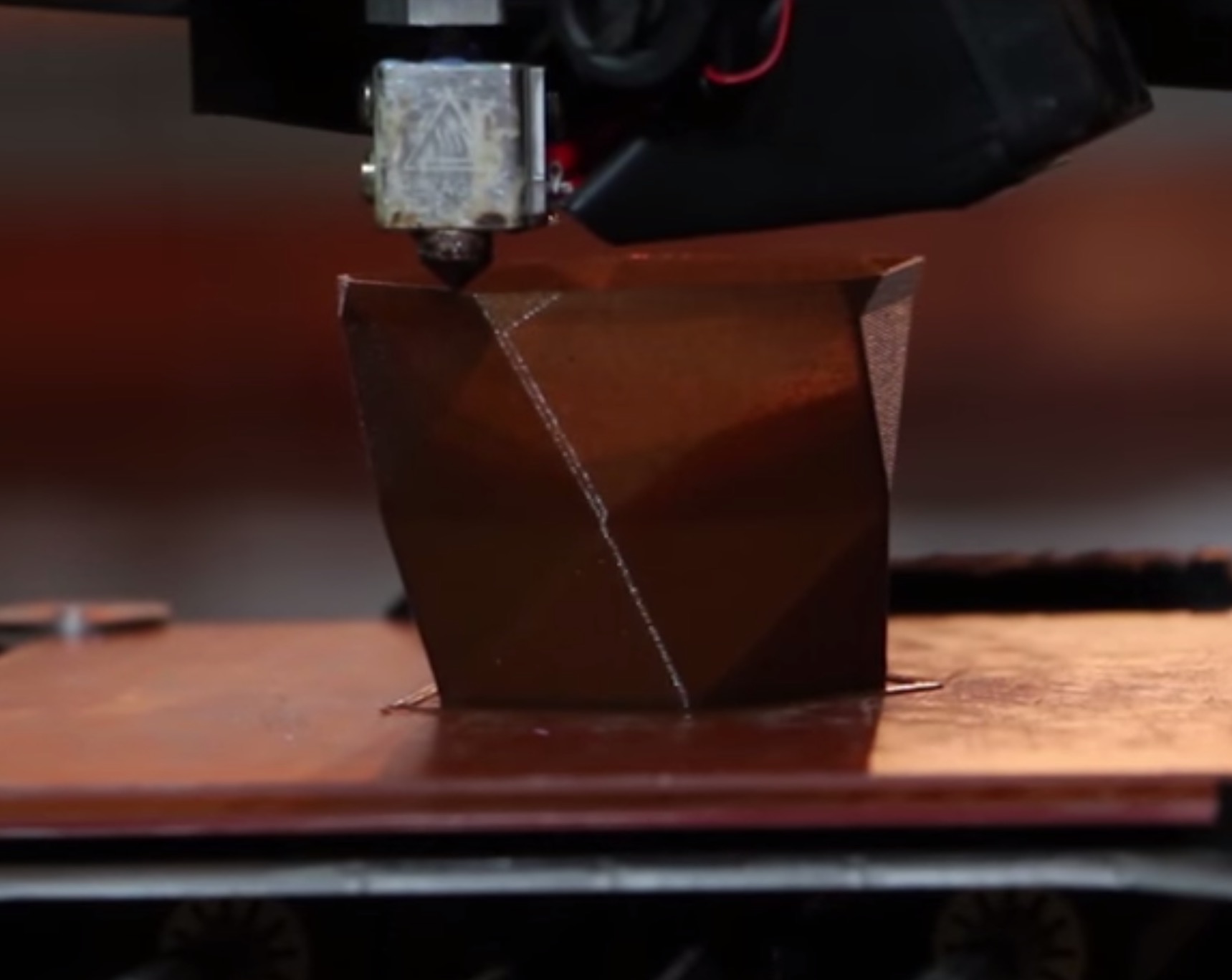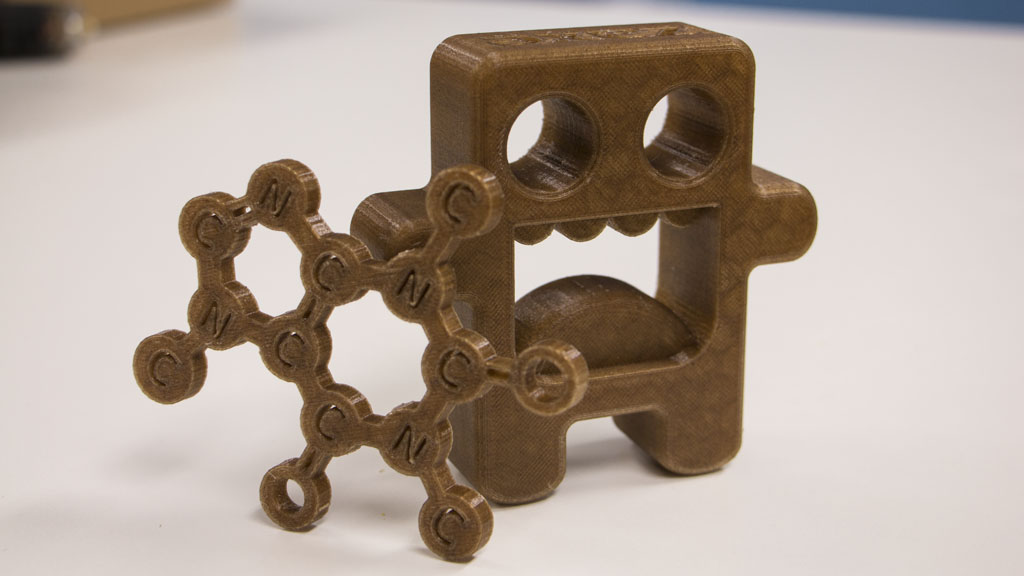
3DOM announced a new 3D printer filament made from coffee grounds. Yes, really, and it actually makes sense. But there’s likely a lot more interesting things to come.
The new filament is actually a hybrid, made from a mix of a PLA base and actual coffee grounds. The powdered grounds are simply combined with PLA to form a filament. This approach has been done many times in the past with more conventional materials, such as metal or wood powder. But we hadn’t imagined seeing coffee as a 3D printer material.
Why do this? There are essentially two reasons. First, coffee grounds are a waste material found everywhere coffee is consumed. Normally they are thrown away into landfills or composted. But now there is another approach: convert them into 3D printer filament. In this way you can feel a bit more “eco” when 3D printing. The PLA component is, of course, also biodegradable.
The second reason for a coffee-based filament is the coloration. Coffee grounds provide a rich, warm brown color that we haven’t seen elsewhere, with which you can print very beautiful objects.
Consider this 3D print of a coffee molecule, made by Fargo 3D Printing. The material has a very nice color that is reminiscent of wood.
The coffee filament is branded as “Wound Up”, and is available for sale today at 3DOM’s online store. Sold in either 1.75mm or 3.00mm formats, it’s available on 1kg spools at a cost of USD$49. This is not an economy material, but neither is it horribly expensive.
This new filament suggests the market for unusual hybrid 3D printing materials might be larger than one might expect. Certainly the rise of metal and wood-based filaments has proven popular, but those are actual construction materials. Coffee definitely is not.
But now it is.
What other non-construction materials might one put into a 3D printer filament? Could we see peanut filament? Walnuts? Salt? Orange peel? Watermelon rinds? Carrot tops?
Ok, carrot tops probably won’t make the list. But the idea is still wide open: any powderized solid material might just appear in a 3D printer filament one day.
Via 3DOM


